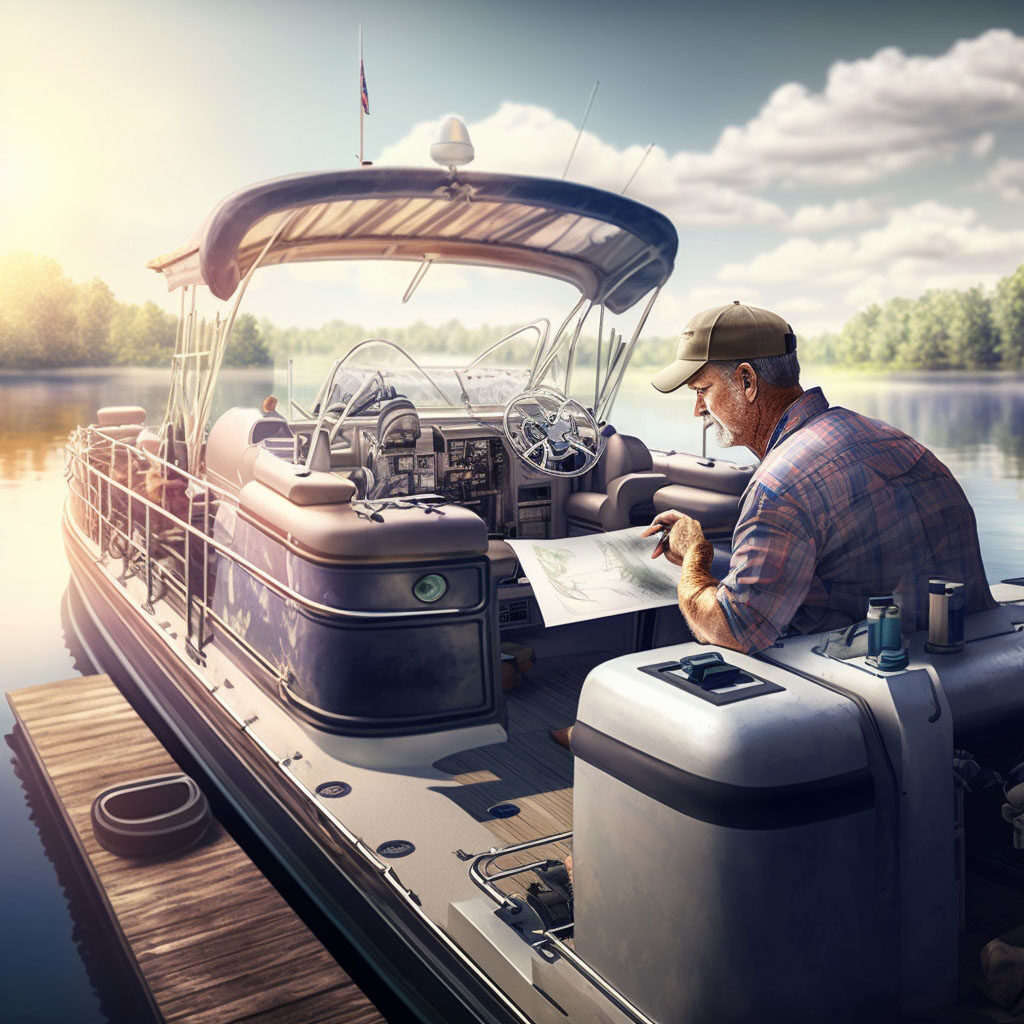Can a sailboat tip over? A common question asked by new sailboat owners and sailing enthusiasts.
Sailing is a sport and can also provide a great form of recreation for people of all ages. It involves the use of wind and sails to propel a boat forward.
To find out the answer to this question and why. You have come to the right place.
Although sailboats are one of the most stable water vessels, they can tip over in certain conditions. The design of most sailboats makes capsizing rare. When it happens, most sailboats can right themselves.
Even though this does not happen a lot, you might find yourself in a dangerous situation when it happens. You need to know how to prevent it from happening and what to do if it happens.
What Causes a Sailboat to Capsize?
Some factors may be responsible for a capsized sailboat. They include any of the following:
- Operator Error
In sailing, heeling is where you tilt your boat to the left or right. An inexperienced sailor could tilt the boat too much or too fast, causing it to tip over. - Weight
Avoid instability, and your boat will not tip over. Weight is a major contributing factor to instability on a boat. It could be an overweight or uneven distribution of weight. Overweight if the onboard weight exceeds the weight capacity of the vessel.
Even when the weight is not in excess, you must distribute it equally. - Boat Modification
Modifications that affect the center of gravity of the boat will cause it to be unstable. Sacrificing stability for design is a considerable risk. - Overspeeding
Excess speed makes the vessel challenging to control. Turning a boat at extreme speeds will most likely cause it to tip over. Sailboats are not for racing but leisure activities. - Cargo Issues
When the load on the boat begins to move due to the waves, it will cause listing. Listing is when the boat tilts due to weights inside it.
Sailors must ensure that they secure all cargo onboard. - Bad Weather
Sailing in bad weather is as dangerous as it gets. Rain and violent winds can force the boat to capsize. Things can even get worse if the drainage is blocked and water collects on the boat. If the weather forecast shows inclement weather, it is best not to sail. - Flooding
The older the boat, the more prone it is to Degradation. Though durable, sailboats will be susceptible to openings from loose or weak fittings. It will allow water to collect on the boat and reduce its buoyancy, allowing it to capsize.
The Keel
Located at the bottom of the boat’s hull, keels are designed to prevent the boat from swaying from side to side on the water. Keels counter the wind force in the sails and keep the boat moving straight.
Heeling
Heeling is the tipping of a boat to the right or left due to wind force against the sail.
Most sailboats have deep keels built into the hull to prevent the boat from tipping due to heeling.
Sailboats stay upright, thanks to their designs which provide enough ballast. Heeling is common to all sailboats, especially when winds are strong.
How To Prevent Your Sailboat From Tipping Over
Learning good sailing techniques will save you a lot. A good sailor knows when to sail and when not to. Prevention is better than cure.
Let us take a look at some preventive methods to reduce the risk of capsizing.
Watch Your Cargo Weight
Do not take more than the required capacity of your boat on. You must consider all weights before you set sail. Passenger weight, Cargo weight, and equipment must all be checked. Do not add an extra pound.
Do not overload your boat: Ensure you do not add one pound more than the required weight your boat can carry.
Still, on the weight, make sure to spread the passengers and cargo evenly on the boat. Placing too much load on one side will cause an imbalance which might cause the boat to tip over.
Slow Down When Turning
Unless you want to swim or risk wrecking your boat, you should not turn at fast speeds. If you notice you are going too fast and you want to turn, slow down. Take wider turns instead of sharp ones. If you have a small vessel reducing your speed even further is best practice.
Always Check The Weather Forecast Before You Set Sail
Sail if and only if the weather is fair. Even if you have a large boat, it is never advisable to sail in bad weather conditions. While bigger boats can withstand harsh conditions, small boats will tip over.
When the weather is terrible, the wind is more robust and the waves bigger. Your boat can quickly fill up with water, causing it to capsize. If you notice the weather is becoming unfavorable, head back to land.
Do Not Sail Impaired
Do not risk your life and those of your passengers by sailing when intoxicated or impaired. When you are intoxicated, you are prone to make mistakes. Also, you will not respond to situations on time. Do not take alcohol if you must sail before or during the event.
Learn The Proper Use Of The Anchor
You don’t want your boat to tip over while it is anchored.
Make sure you attach the anchor line appropriately to your boat. For proper stability, tie the line to your bow and not the stern of your boat.
Good Sitting Arrangement
Monitor the sitting arrangement in your boat. Passengers should stay away from the upper part of the boat. Keep them away from the gunwale. Passengers sitting past the gunwale make the boat unstable.
Your passengers should sit in the chairs available and not on parts of the boat. If passengers sit elsewhere, they may affect your balance.
Do not allow your passengers to move about or change seats once you set sail. Make sure everyone is comfortable before sailing.
What To Do If Your Boat Tips Over
By now, you know that in certain conditions, a sailboat can tip over. We will now describe the steps you should take if this happens.
Usually, when a boat tips over, it should come to rest at about a 90-degree angle. Water will start to fill the boat, forcing the mast of the ship further down. The deeper the mast, the more difficult it is to right the boat.
The first thing to do when your boat capsizes is to do a headcount. Make sure you can physically see everyone who was aboard before the accident.
Ensure that everyone is wearing a lifejacket. Lifejackets are to be worn on the boat before it sets sail. If you find any passenger without a lifejacket, quickly assist them in getting one. You should know where the lifejackets are on your boat, and they should be easily accessible.
According to the United States Coast Guard, every person below the age of 13 must wear a lifejacket at all times.
The next step is to get to the bottom side of your boat. Stand on the centerboard and pull on the rail until the boat rolls into position.
Get inside the boat from the bow or stern, never from the side.
Trying to get in through the sides may cause the boat to tip over again.
There will be water inside the boat now. Get a bucket (part of the sailing requirements) and move to the front of the boat.
Sit at the front of the boat and begin to scoop out the water from the boat.
If you have a partner, have them stay in the water and hold down the bow while you bail out the water.
Using a bucket, a hand bilge pump, and a sponge, you can remove all the water.
After removing the water, get everyone back on board.
Assess the boat if it is in a condition to sail. If so, you may continue your journey.
Call for help. You can wave if you have to. Suppose there is no help around. You can issue an SOS alert to the U.S Coast guard on VHF channel 16 or call 911.
Sailboats That Capsize More Often
Sailboats that do not have heavy keels are more likely to capsize. Some sailboats use centerboards which do not provide enough ballast.
The size of the boat is also an essential factor. The smaller the boat, the easier it is to tip over.
What Is The Most Stable Type Of Sailboat?
The least likely sailboat to tip over is the catamaran-style boat.
They do not use keels like monohull sailboats. Instead, they are two hulled boats measuring almost as wide as they are long. The catamaran does not have a keel and can be used for shallow-water sailing. Their size makes them more stable than monohull boats.
More From Boating Guide Online Boat Resource
Crab Island by Pontoon: A Fun Watery Boating Guide Destination in 2024
Upgrade Your Boating Experience: Adding a Third Pontoon Made Easy!
As the sun sets over the tranquil waters, the gentle hum of the engine and…
How Long Does It Take A Canoe To Go… (Canoe Calculator Here)
You asked, and we answered: Here’s a calculator to determine how long your canoe trip…
In-Depth Review of the Pelican Sentinel 100X Fishing Kayak: Pros, Cons, and Performance
As an avid angler, I understand the importance of having a reliable and durable kayak…
How To Put A Kayak In The Water – The Ultimate Guide For New Kayakers
Kayaking is a fantastic way to explore the outdoors and enjoy the water, but putting…
Best Cruising Catamarans For Couples
Looking for the best cruising catamarans for couples? Are you looking for the best spot…
- A Complete Catamaran Guide
- Can A Catamaran Capsize?
- Can One Person Sail A Catamaran? 10 Tips For Solo Sailing
- Staying Safe On A Catamaran: 24 Essential Tips
- Are Catamarans Safe In Rough Seas?



















